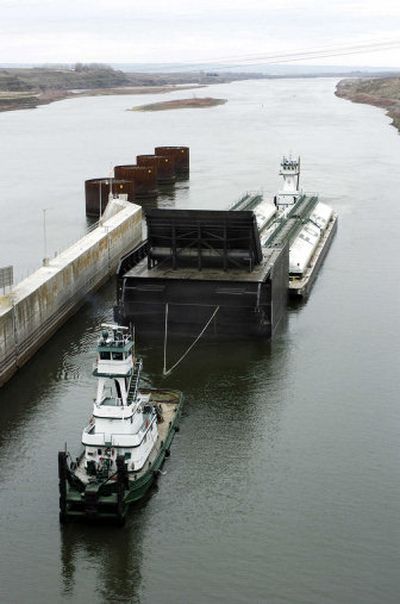Salmon efforts cost millions

GRANTS PASS, Ore. – Northwest populations of Pacific salmon accounted for one of every four state and federal dollars spent on saving endangered or threatened species during 2004, according to a U.S. Fish and Wildlife Service report.
Government agencies spent $393 million on helping the five Pacific salmon species protected by the Endangered Species Act – chinook, steelhead, coho, sockeye and chum. Total government spending for 1,838 listed species was $1.4 billion, the report said.
And the cost promises to rise. The Bush administration says it will spend $6 billion over the next 10 years to modify eight federally owned hydroelectric dams on the Snake and Columbia rivers to make them less lethal to salmon.
Cost is increasingly becoming a factor in the debate over how best to restore struggling salmon runs.
“Virtually everyone in the region supports recovery,” said Bob Lohn, Northwest regional director of NOAA Fisheries, the federal agency responsible for restoring salmon. “The debate is about the most effective way to get there and whether it can be done as effectively at a lower cost.
“The ESA plainly makes the value decision that not only is it worth it, but we’ve got to do it,” he added. “That decision is made for us.”
Salmon compete for water and habitat with hydroelectric dams, irrigation withdrawals, barge transportation, shipping channels, logging, livestock grazing and urban development. And federal plans to minimize the harm from those competing interests in the Columbia Basin – particularly the dams – have yet to get approval from a federal judge making sure they measure up to the demands of the Endangered Species Act.
Reps. Greg Walden, R-Ore., Brian Baird, D-Wash., and Norm Dicks, D-Wash., have held a series of hearings putting more pressure on sport and commercial fishing and hatcheries to contribute.
“Right now it seems like some of this is on autopilot in the region and we’re paying a pretty heavy cost,” said Walden. “When you add up the costs to the region in cash, jobs, in emotion, we should be making sure we get these little fish out, and when they come back as adults minimize the impediments to reproducing in streams. That includes passage through the hydro system, access to the habitat, and can they swim past the nets and the hooks.”
The Bush administration has shown support with a proposal to reduce the impacts on protected fish from fishing and has started a comprehensive review of hatcheries – shutting some down if necessary – to be sure they no longer harm protected fish. Scientists have long blamed hatcheries for producing salmon that dilute the gene pool, spread disease, and compete for food and habitat, while being less fit to survive in the wild.
Property rights advocates are suing to delist the 26 separate populations of the five Pacific salmon species, arguing there is no reason to focus recovery efforts on wild fish that spawn in rivers, rather than just replacing them with fish spawned in hatcheries.
Noting that dams are responsible for killing as much as 80 percent of the young fish migrating to the ocean, salmon advocates argue that efforts to reduce harvests are intended to divert attention from the dams – particularly their proposal to remove four dams on the lower Snake River in Eastern Washington.
They note that NOAA Fisheries said in a 2000 plan that cutting out all fishing would have little effect on listed runs.
American Rivers, a conservation group, estimates that breaching the four dams on the Snake would cost up to $4 billion over the next 10 years, compared to the $6 billion the Bush administration is spending on modifications to help juvenile fish get around the dams.
The $2 billion saved could go toward upgrading railroads to take the place of barges that haul grain to Portland and developing wind power and energy conservation to replace the 1,200 megawatts produced by the dams, said American Rivers spokesman Michael Garrity.
The first salmon on the endangered list was the Snake River sockeye in 1991, which has dwindled to a few fish returning each year. A few more runs were protected in the early 1990s, then the floodgates opened in the late 1990s. Oregon coastal coho has been taken off the list by court action, and NOAA Fisheries decided against putting it back based on Oregon’s protection efforts.
In 2001, accounting methods were changed to include as a cost the electrical power sales lost to the Bonneville Power Administration because it spilled water rather than killing young salmon by running them through turbines.
Salmon advocates argue that the accounting change paints a biased picture, assuming that BPA owns all the water in the river and can do what it likes with it.